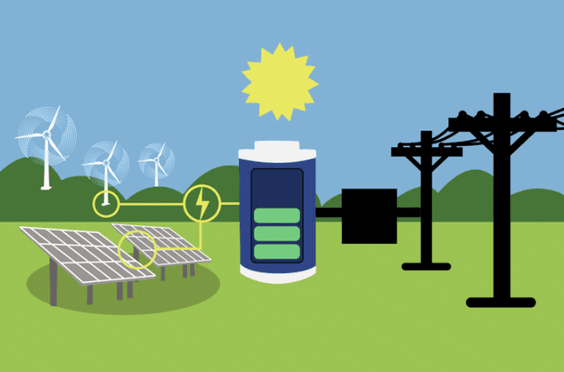The Spanish Photovoltaic Union (UNEF), the majority association of solar energy in Spain that has more than 800 associated companies, claims in the context of the International Day of Light, the great value of solar energy storage as a basic tool for the Citizens have a fairer, more sustainable electricity supply aligned with the decarbonization objectives of our economy.
To maximize the economic opportunity generated by solar energy and decarbonize all sectors of society, UNEF considers it essential to ambitiously address the implementation of green hydrogen and storage systems in solar energy projects.
“For UNEF it is a priority to continue working hand in hand with companies and public institutions to develop an appropriate strategy that will allow us the definitive boost that behind-the-meter storage needs. It is a key piece for the integration of renewables into the grid and decarbonization, so this drop shows the need to continue working on the creation of financing schemes that make this type of installations more competitive, such as the exemption from VAT or tax relief.”, explained José Donoso, general director of UNEF, in the context of this day.
For this reason, the sector association has prepared a list of the five main reasons why behind-the-meter storage is a fundamental piece in the decarbonization of our economy:
- MAKE THE MOST OF THE ENERGY GENERATED: Storage allows us to save all the solar generation that we do not consume in solar hours. Sometimes we generate more renewable electricity than we can feed into the grid at a given place and time, and we even generate more renewable energy than we need at that precise moment in the entire electrical system as a whole. If we do not store this electricity, it will be lost, so it is better to have storage that allows us to store all that excess energy that is left over (either locally or in the electrical system as a whole) so that we can use it at another time.
- SOLAR GENERATION IN HOURS WITHOUT SUN: Storage allows us to shift solar generation to hours when there is no sun, also decarbonizing those hours. The energy that we have saved in hours when we have excess renewable generation can be used in hours when there is less renewable generation. This allows us to eliminate more fossil generation from those hours with less sun.
- STABILITY FOR ELECTRICAL GRIDS: Storage helps provide stability to electrical grids by ensuring that they maintain a stable frequency so that the light turns on whenever we press a switch. In an electrical system, generation and consumption must be equal so that the frequency does not deviate from 50Hz. Batteries can react in fractions of a second, consuming or generating electricity to the grid, as needed to provide stability. Currently, part of this stability is provided by combined cycle power plants, so we need storage to dispense with these power plants.
- SAVINGS ON THE BILL AND DECONGESTION OF ELECTRICAL NETWORKS: Behind-the-meter storage allows us to save on the electricity bill and in the hours when electricity from the network is more expensive, we use the energy stored in our batteries. In the electricity bill we pay for the energy we consume and the electrical networks we use. On the one hand, the price of energy each hour depends on electricity demand and renewable generation. On the other hand, the price of the networks depends on how congested they are at each hour, with electricity tolls being more expensive when the network is more congested during peak periods, from 10:00 a.m. to 2:00 p.m. and from 6:00 p.m. to 10:00 p.m.: 00. During these hours we can consume electricity from our battery and thus save network consumption. In addition to saving money, this also decongests the network during peak hours so that other consumers benefit.
- INDUSTRIAL DECARBONIZATION: Thermal storage allows us to decarbonize many industrial processes that now generate heat with methane. There are a large number of industrial processes that generate heat by burning methane: textile industry, paper industry, food processing, chemical industry, etc. All this heat generation can be electrified so that we stop using methane and, therefore, stop emitting CO2. But many of these industries need that heat all day often almost 24/7, so they must accumulate that thermal energy during solar hours to release it during all their working hours.
- “Storage systems allow us to make more efficient use of surpluses, that is, energy not self-consumed at the time it is generated, in order to be able to consume it at a later time. In the coming years, batteries are going to have the same importance as the solar panels themselves,” explains Donoso.
- II UNEF Green Hydrogen and Storage Summit
- To achieve all these advantages for citizens, UNEF is developing a priority line of work on Storage & Green Hydrogen in 2024. In this context, UNEF celebrates the II International Summit on Storage and Hydrogen on May 22 and 23 in Madrid, which will feature the greatest international experts in these matters, who will share their vision and experiences on the development and future of storage and hydrogen in our country.
- During the conference, the current regulatory framework for storage and hydrogen, the existing technical challenges, the financing opportunities for these projects and the growth prospects, as well as the decarbonization possibilities of the electricity and other sectors, will be addressed.


